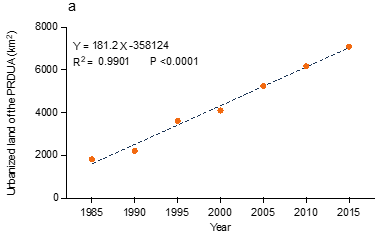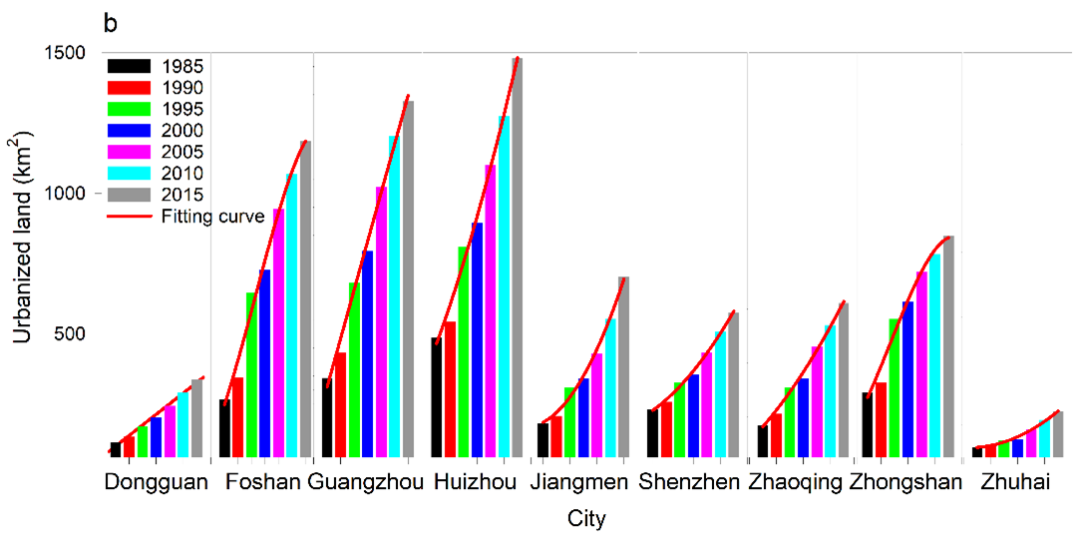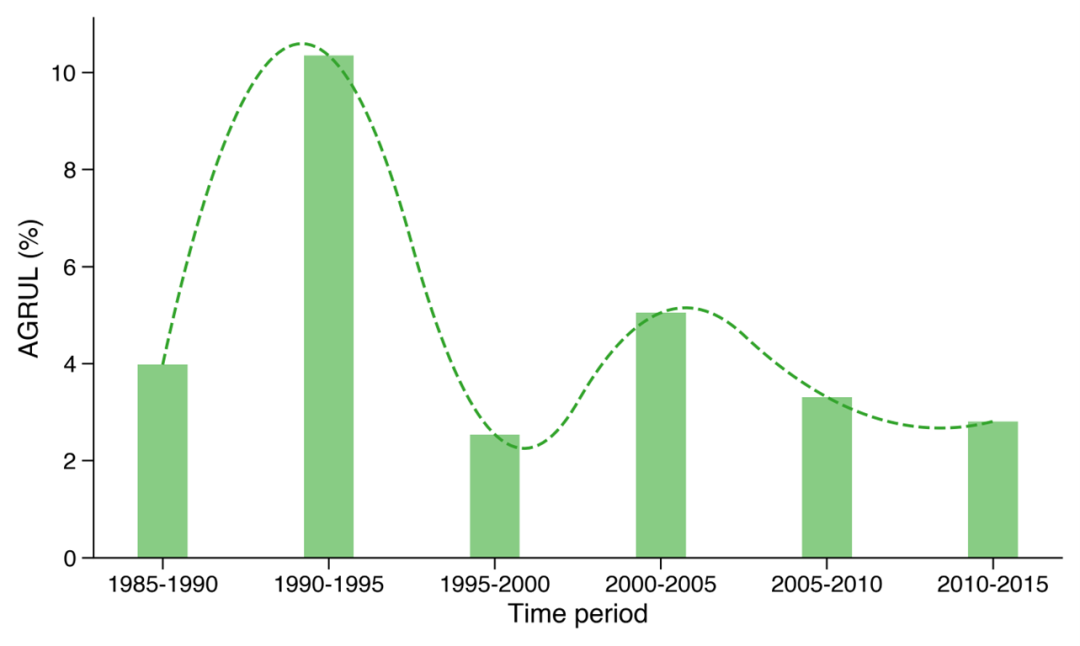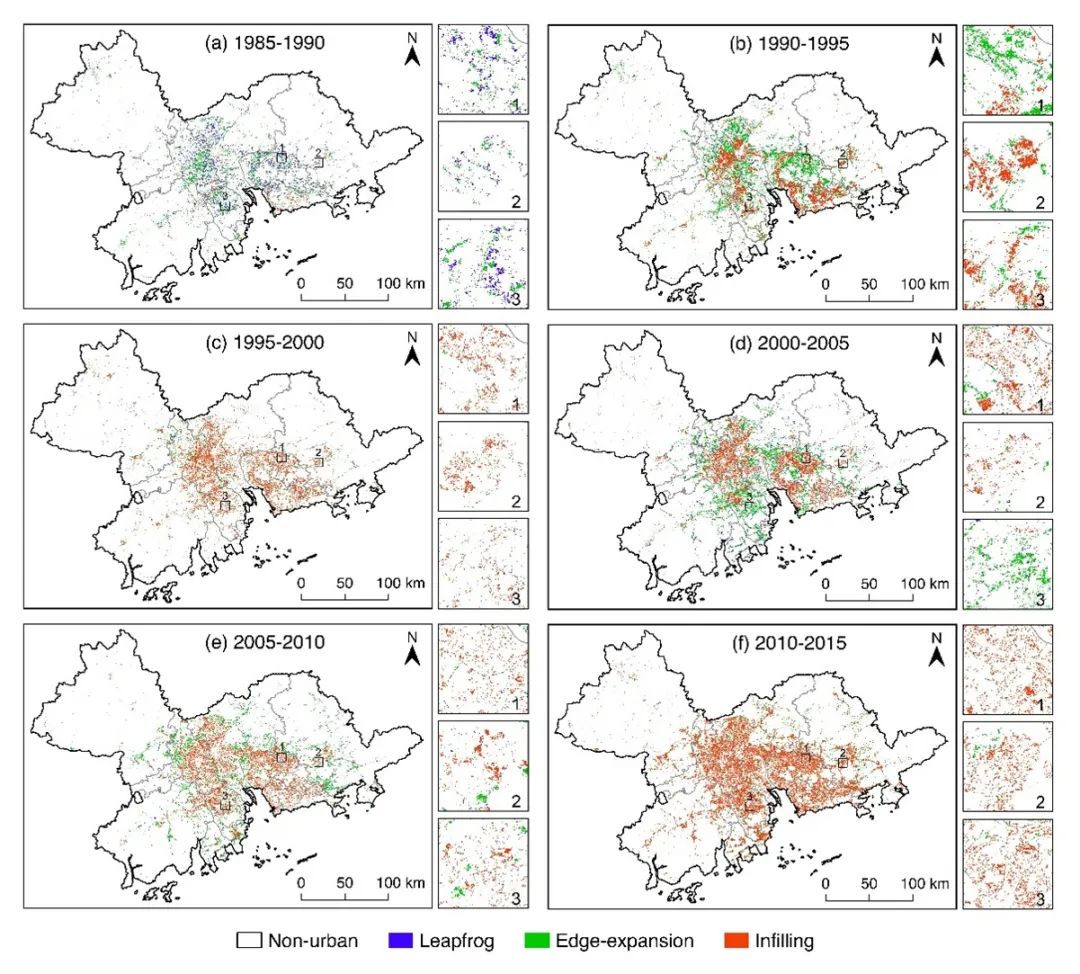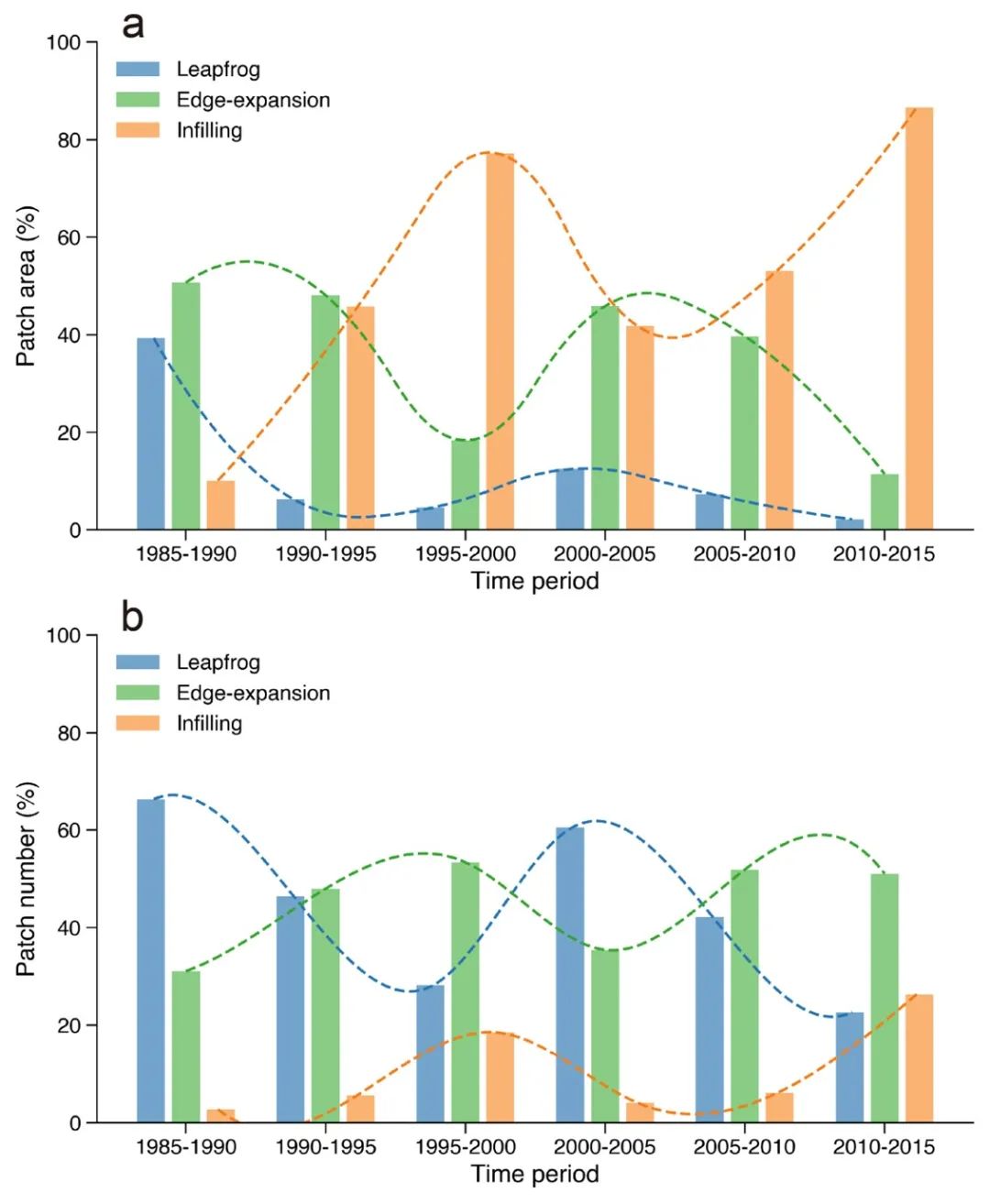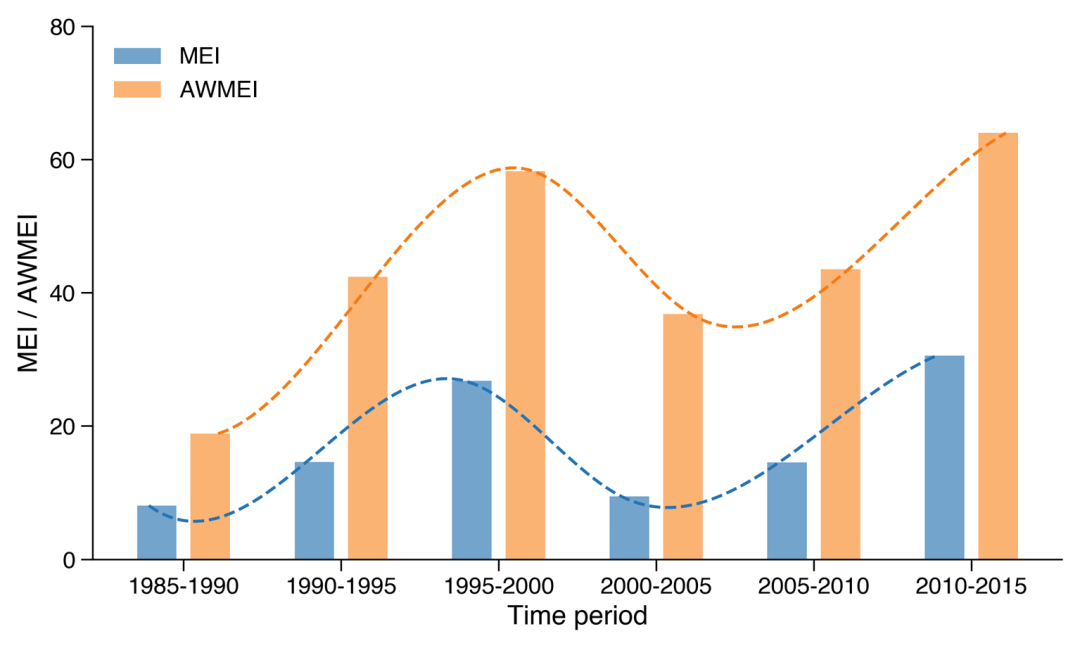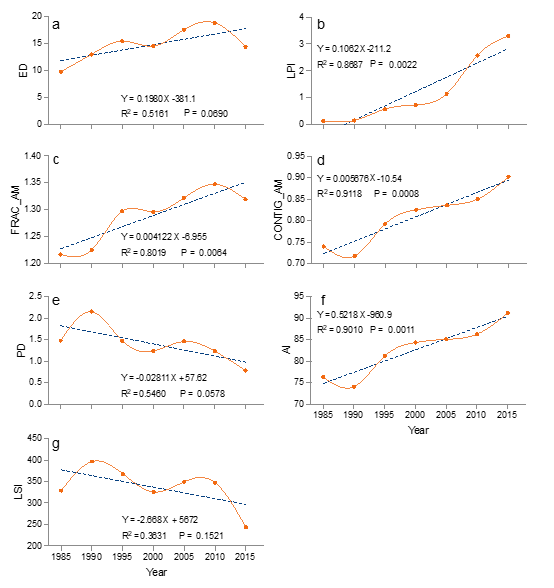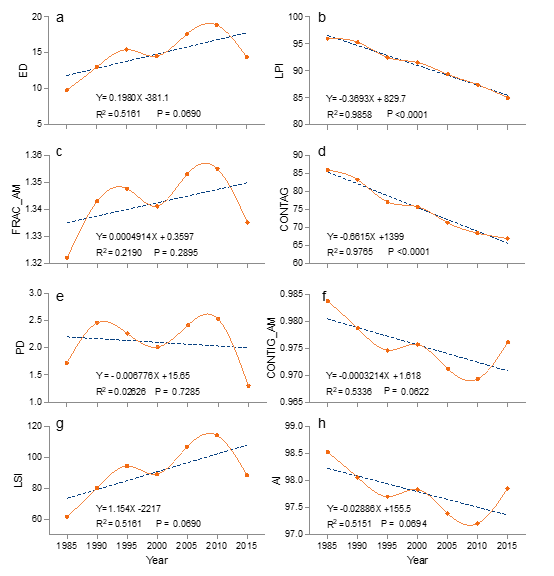返回列表日期:2024-02-26阅读:1291
摘 要
城市群是区域和国家经济增长的引擎,但同时导致用地类型的剧烈变化,从而引发诸多生态环境问题。本研究量化了珠三角城市群的时空演变,并评估了其对城市和区域景观格局的影响。研究结果表明,1985-2015年间,珠三角城市群经历了快速城市化,城市群面积呈线性增长,从1819.8 km2增加到7092.2 km2。城市用地年均增长率随时间呈现双峰型波浪形模式,表明该区域城市群经历了两轮城市化进程。在城市化过程中,城市群的三种增长模式(飞地模式、边缘扩张模式、内填模式)呈现出相互并存交替的主导格局,表明珠三角城市群扩张的时空演变遵循了“螺旋式扩散-聚合”假说,城市群形态在时间上呈现出“分散-紧凑”的交替模式。随着时间的推移,城市水平和区域水平的景观格局与珠三角城市群的时空演变同步变化。珠三角城市群的城市化既增加了景观的复杂性和聚集度,也导致珠三角城市群自然景观的破碎化程度增加和连通性降低。这些发现有助于更好地理解城市群的演变过程,并为区域的城市规划和可持续土地管理提供参考。
关键词:城市群,城市增长,景观扩张指数,扩散-聚合假说,时空演变,珠江三角洲,珠三角城市群
An urban agglomeration is the engine of regional and national economic growth, but also causes many ecological and environmental issues that emerge from massive land changes. In this study, the spatiotemporal evolution of an urban agglomeration was quantified and its impacts on the urban and regional landscape patterns were evaluated. It showed that the urbanized land area of the Pearl River Delta Urban Agglomeration (PRDUA) in China nearly quadrupled, having linearly increased from 1819.8 km2 to 7092.2 km2 between 1985 and 2015. The average annual growth rate presented a bimodal wave-like pattern through time, indicating that the PRDUA has witnessed two rounds of the urbanization process. The growth modes (e.g., leapfrog, edge-expansion, infilling) were detected and they exhibited co-existing but alternating dominating patterns during urbanization, demonstrating that the spatiotemporal evolution of the urban development of the PRDUA follows the “spiral diffusion-coalescence” hypothesis. The morphology of the PRDUA presented an alternating dispersal-compact pattern over time. The city-level and regional-level landscape patterns changed synchronously with the spatiotemporal evolution of the PRDUA over time. The urbanization of the PRDUA increased both the complexity and aggregation of the landscape, but also resulted in an increasing fragmentation and decreasing connectivity of the natural landscape in the Pearl River Delta region. These findings are helpful for better understanding how urban agglomerations evolve and in providing insights for regional urban planning and sustainable land management.
Key words: urban agglomeration; urban growth; landscape expansion index; diffusion and coalescence hypothesis; spatiotemporal evolution; Pearl River Delta; PRD
图1. 珠三角城市群(a)及其九个主要城市(b)的城市用地面积随时间变化轨迹
图2. 1985-2015年珠三角城市群城市用地的空间格局
图3. 1985-2015年珠三角城市群城市用地面积年均增长率变化
图4. 1985-2015年珠三角城市群三种增长模式(内填、边缘扩张和飞地)的空间格局
图5. 1985-2015年珠三角城市群三种增长模式的斑块面积(a)和斑块数量(b)所占比例的时间变化格局
图6. 1985-2015年珠三角城市群平均景观扩张指数(MEI)和面积加权平均景观扩张指数(AWMEI)的时间变化格局
图7. 1985-2015年珠三角城市群城市水平景观指标的时间变化趋势:a-边缘密度(ED),b-最大斑块指数(LPI),c-面积加权平均斑块分形维度(FRAC_AM),d-蔓延指数(CONTAG),e-斑块密度(PD),f-聚集指数(AI),g-景观形状指数(LSI).
图8. 1985-2015年珠三角城市群景观水平景观指标的时间变化趋势。a-边缘密度(ED),b-最大斑块指数(LPI),c-面积加权平均斑块分形维度(FRAC_AM),d-蔓延指数(CONTAG),e-斑块密度(PD),f-面积加权平均邻接指数(CONTIG_AM),g-景观形状指数(LSI),h-聚集指数(AI)
上海交通大学设计学院已毕业硕士生吴炯(现为本院在读博士生)和博士后武彩燕为论文共同第一作者,李俊祥教授为论文通讯作者。论文合作者还包括北卡罗来纳大学张琦博士、宋从和教授,上海交通大学已毕业硕士生庄铭皓、肖慧蓉、吴晖,上海人工智能实验室欧阳霖柯博士,华东师范大学博士生刘宇晗、孟陈,柏林洪堡大学教授Dagmar Haase。本研究获得国家重点研发计划项目(2022YFF1301105)、国家自然科学基金(32001162、31971485)、博士后面上项目(2021M702131),以及上海交通大学-墨尔本大学博士生联培基金共同支持。
引用格式:
Wu, J., C. Wu, Q. Zhang, M. Zhuang, H. Xiao, H. Wu, L. Ouyang, Y. Liu, C. Meng, C. Song, D. Haase, and J. Li. 2023. Spatiotemporal evolution of urban agglomeration and its impact on landscape patterns in the Pearl River Delta, China. Remote Sensing 15:2520. https://doi.org/10.3390/rs15102520
素材来源:上海交通大学设计学院风景园林系
撰文:吴炯
审核:李俊祥 常湘琦
编辑:徐晨萱、徐畅
